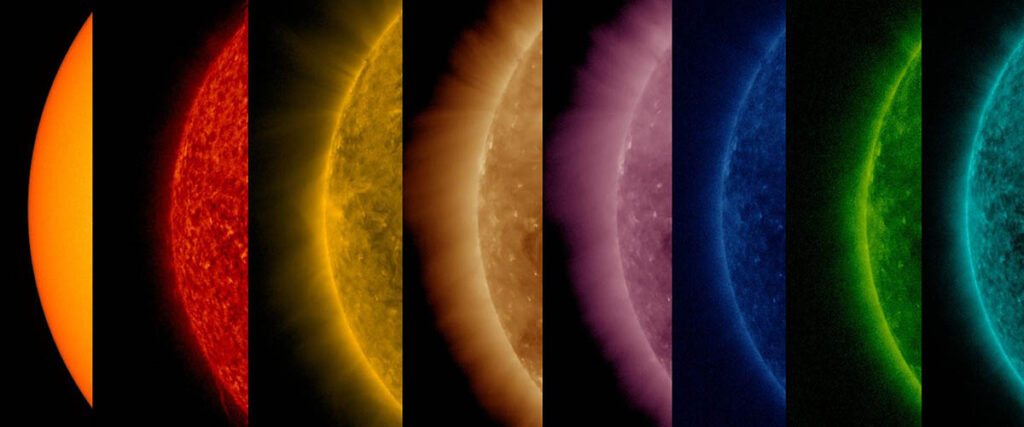The sun is undeniably one of the most important celestial bodies in our solar system. It provides the energy that sustains life on Earth, but have you ever wondered what color the sun truly is? The sun’s color is not as straightforward as we might think. While it may appear yellow or orange, especially during certain times of the day, its actual color is far more complex. In this article, we will dive into the true color of the sun, examine why it appears the way it does, and explore some fascinating facts about sunlight and its vital role in sustaining life on Earth.
Understanding the True Color of the Sun
At first glance, the sun seems to be a vibrant yellow or orange orb in the sky. This is particularly noticeable during sunrise and sunset, when the sun gives off a reddish or warm hue. However, the sun’s true color might surprise you: it’s not yellow at all.
The sun emits light across the entire visible spectrum, which, when combined, forms what we call white light. The reason we often perceive the sun as yellow is due to the effects of Earth’s atmosphere. When sunlight enters Earth’s atmosphere, it interacts with air molecules and small particles, causing the shorter wavelengths (blue and violet light) to scatter more than the longer wavelengths (red, yellow, and orange). This scattering phenomenon is known as Rayleigh scattering.
From the surface of the Earth, we see the scattered blue light, but the remaining light—which includes a mix of colors such as yellow, red, and orange—dominates, making the sun appear yellowish. In reality, the sun’s true color is white when observed from space or higher altitudes, where there is no atmospheric interference.
The Color Code of the Sun: RGB and Pantone Models
When discussing the sun’s color, we often refer to various color models like RGB (Red, Green, Blue) or Pantone to better understand the shade we associate with the sun’s appearance. The RGB model is commonly used in digital displays, where each color is represented by a combination of red, green, and blue values.
In terms of RGB, the Color of the Sun can be approximated as #FFD700, which is a golden yellow shade. While this gives us an idea of the sun’s color from the Earth’s surface, it’s important to note that this is not an exact representation of the sun’s true color, but rather an approximation influenced by atmospheric scattering.
In the Pantone color system, which is widely used in design and printing, the sun’s color is often represented by Pantone 123 C, a bright yellow hue symbolizing warmth, light, and energy. Again, this is more of a design choice rather than a direct representation of the sun’s actual color.
Why Does the Sun Appear Yellow or Orange at Times?
While the sun itself emits white light, we often see it as yellow or orange during certain times of the day. This is due to the way sunlight interacts with Earth’s atmosphere. During the day, sunlight travels through a relatively short distance of the atmosphere, causing shorter wavelengths like blue and violet to scatter and allowing the longer wavelengths of yellow, red, and orange to reach our eyes.
However, at sunrise and sunset, the sun’s light travels a longer path through the atmosphere. During this longer journey, the blue light is scattered even more, leaving behind a higher concentration of red, orange, and yellow wavelengths. This is why we often see the sun as orange or red at these times.
Interesting Facts About Sunlight
Sunlight is much more than just the light we see during the day. It plays a significant role in life on Earth and has many fascinating properties. Here are some intriguing facts about sunlight:
1. Sunlight Contains All Colors of Light
As mentioned, sunlight is a mix of all colors of light in the visible spectrum, which combine to form white light. It is only through scattering that we perceive sunlight as yellow or orange at times.

2. Sunlight is Essential for Photosynthesis
Plants rely on sunlight for photosynthesis, a process that allows them to convert sunlight into energy. This process is vital not only for plants but also for the entire food chain. Without sunlight, plants could not produce the nutrients necessary for life to thrive on Earth.
3. UV Radiation
While sunlight is beneficial in many ways, it also contains ultraviolet (UV) radiation, which is invisible to the naked eye. UV radiation is crucial for the production of vitamin D in our skin, but excessive exposure to UV rays can lead to skin damage, sunburns, and even increase the risk of skin cancer.
4. The Sun Is 93 Million Miles Away
Despite its immense size and power, the sun is located approximately 93 million miles from Earth. This vast distance means that it takes about 8 minutes and 20 seconds for light to travel from the sun to the Earth.
5. Sunlight Can Influence Mood
Exposure to sunlight has been shown to have positive effects on mental health. Sunlight stimulates the release of serotonin, a hormone responsible for boosting mood and promoting feelings of happiness and well-being.
6. Sunlight Is Actually Heat
In addition to light, sunlight also carries heat. The heat energy from the sun is transferred to Earth, warming our planet and creating the conditions necessary for life. Without the sun’s heat, Earth would be too cold to support life as we know it.
The Sun’s Impact on Earth’s Climate
The sun’s energy is the primary driver of Earth’s climate and weather patterns. The heat from the sun causes evaporation, drives ocean currents, and influences air movements that create weather systems. The intensity and distribution of sunlight on Earth also determine the seasons, leading to temperature variations throughout the year.
1. Solar Power: Harnessing the Sun’s Energy
The sun’s energy is increasingly being harnessed for renewable energy. Solar panels capture sunlight and convert it into electricity, providing a sustainable alternative to fossil fuels. As technology advances, solar power is becoming a major part of efforts to reduce dependence on non-renewable energy sources.
2. Sun’s Role in Water Cycle
The sun is integral to the water cycle, as its heat causes water to evaporate from the Earth’s surface. This moisture then condenses in the atmosphere to form clouds, which can result in precipitation. Without the sun’s energy, the entire water cycle would cease to function.
Conclusion
In conclusion, the sun’s true color is white, a combination of all colors in the visible spectrum. The yellow or orange hue that we often associate with the sun is the result of atmospheric scattering and the way light interacts with Earth’s atmosphere. Whether it’s powering life on Earth, influencing weather patterns, or driving the growth of plants through photosynthesis, the sun plays a central role in maintaining the delicate balance of life on our planet. From its golden appearance to its essential energy, the sun is much more than just a bright spot in the sky—it’s a vital force that sustains life on Earth.

